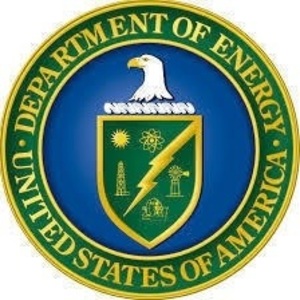ARPA-E helps make U.S. a leader in marine biomass production




September 19, 2017
BY U.S. Department of Energy
The U.S. Department of Energy recently announced $22 million in funding through the Advanced Research Projects Agency-Energy for 18 innovative projects as part of the Macroalgae Research Inspiring Novel Energy Resources program. MARINER projects will develop the tools to enable the United States to become a leading producer of macroalgae, or seaweed, helping to improve U.S. energy security and economic competitiveness. Macroalgae can be utilized as a feedstock for domestic transportation fuels, chemicals, and other commercial products without competing with food crops for land and water.
“From Alaska to the Gulf Coast, the United States has offshore resources capable of producing enough seaweed to handle as much as 10 percent of our demand for transportation fuel,” said ARPA-E Acting Director Eric Rohlfing. “By focusing on the technological challenges to growing and harvesting macroalgae efficiently and cost-effectively, MARINER project teams are building the tools we need to fully put this resource to work contributing to our energy future.”
Today, nearly all domestic biomass produced for electricity generation and liquid fuels occurs on land. While macroalgae production has increased substantially over the past quarter-century, it is not currently capable of achieving the scale, cost, and efficiency needed for an impactful seaweed-to-fuels process. Achieving this heightened productivity requires a technology-driven approach focusing on transformative, systems-level improvements and engineering, including advanced research in farm design and autonomous operation.
ARPA-E project teams rely on partnerships to encourage the exchange of new ideas and achieve the most innovative outcomes. Because impactful macroalgae fuel production remains an extremely ambitious prospect, overcoming the early-stage R&D challenges presented by MARINER requires cross-disciplinary collaboration, drawing on fields such as cultivation and harvesting systems, advanced components, computer modeling, aquatic monitoring, and advanced breeding and genetics tools to achieve program goals.
Advertisement
Advertisement
The full list of MARINER projects can be found here. Examples of selected MARINER projects include:
University of Alaska Fairbanks – Fairbanks, Alaska
Development of Scalable Coastal & Offshore Macroalgal Farming (Category I) – $500,000
Advertisement
Advertisement
The University of Alaska Fairbanks team will develop replicable scale model farms capable of the cost effective production of sugar kelp, a type of seaweed. The UAF project aims to reduce capital cost using purpose-built designs while simplifying installation and production to lower operational expenses. The team seeks to integrate the entire farming process, including seed production, outplanting, grow-out, harvest, and re-seeding. A particular emphasis will be on the development of cost-effective harvesting methods based on technologies applied in the commercial fishing industry. Test deployments for the integrated system are planned for locations in Alaska and New England.
University of Southern Mississippi – Hattiesburg, Mississippi
SeaweedPaddock Pelagic Sargassum Ranching (Category I) – $500,000
The University of Southern Mississippi team will develop a semi-autonomous enclosure to contain fields of free-floating Sargassum mats. Wave-powered tugs, operated remotely onshore by a single person, will move the enclosure to ensure maximum exposure to nutrients. The system is designed to never return to shore, while the pilot can relocate the enclosure to avoid storms and ships—or move it into “dead zones” where excessive nutrients can be taken up by the seaweed, improving ocean health.
Related Stories
The U.S. Department of Energy Bioenergy Technologies Office (BETO) announced up to $23 million in funding to support research and development (R&D) of domestic chemicals and fuels from biomass and waste resources.
The U.S. DOE has announced its intent to issue funding to support high-impact research and development (R&D) projects in two priority areas: sustainable propane and renewable chemicals and algal system cultivation and preprocessing.
Sens. Sherrod Brown, D-Ohio, and Pete Ricketts, R-Neb., in August introduced the Renewable Chemicals Act, a bill that aims to create a tax credit to support the production of biobased chemicals.
The Chemical Catalysis for Bioenergy Consortium, a consortium of the U.S. DOE’s Bioenergy Technologies Office, has launched an effort that aims to gather community input on the development of new biomass processing facilities.
USDA on March 8 celebrated the second annual National Biobased Products Day, a celebration to raise public awareness of biobased products, their benefits and their contributions to the U.S. economy and rural communities.
Upcoming Events










